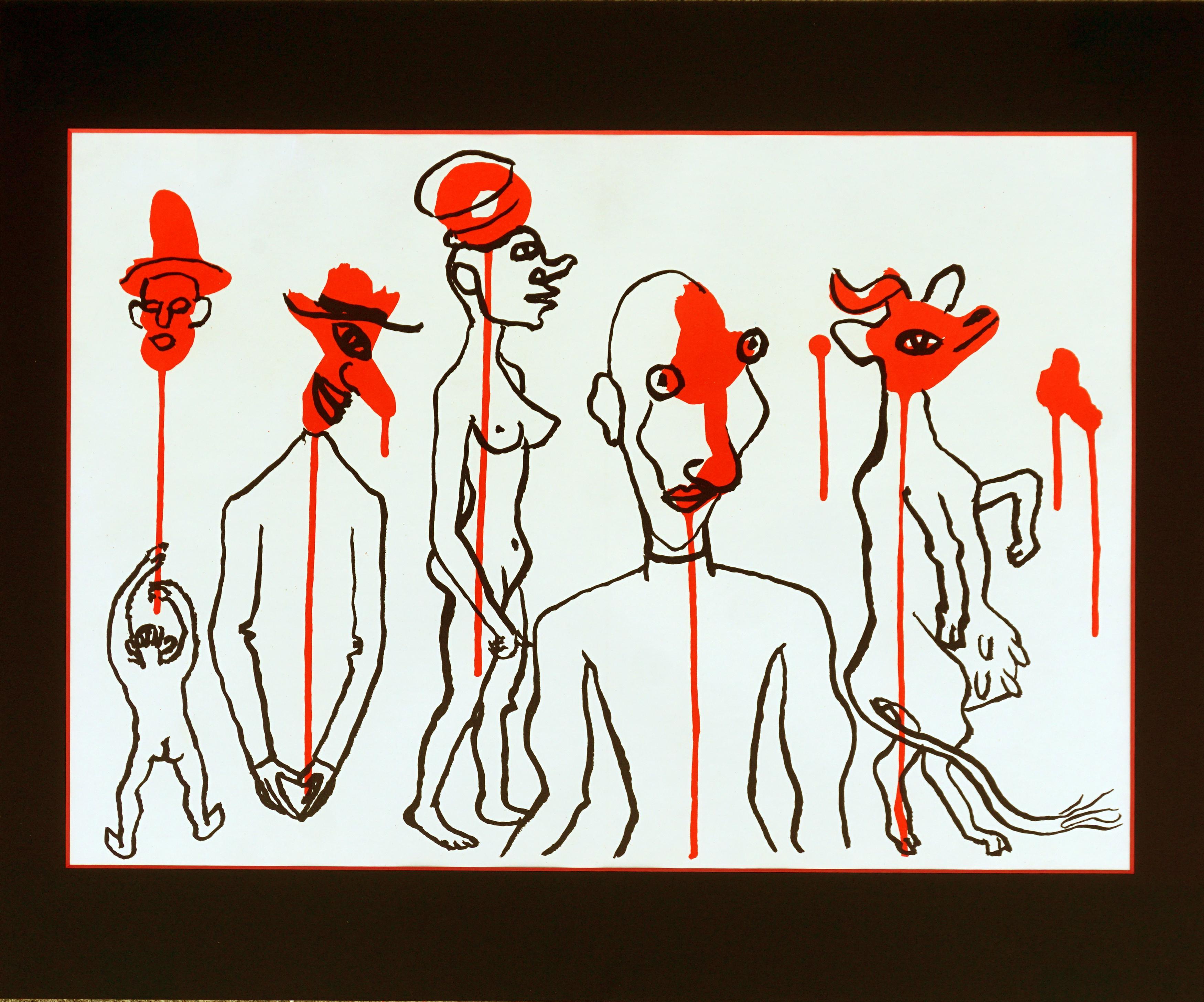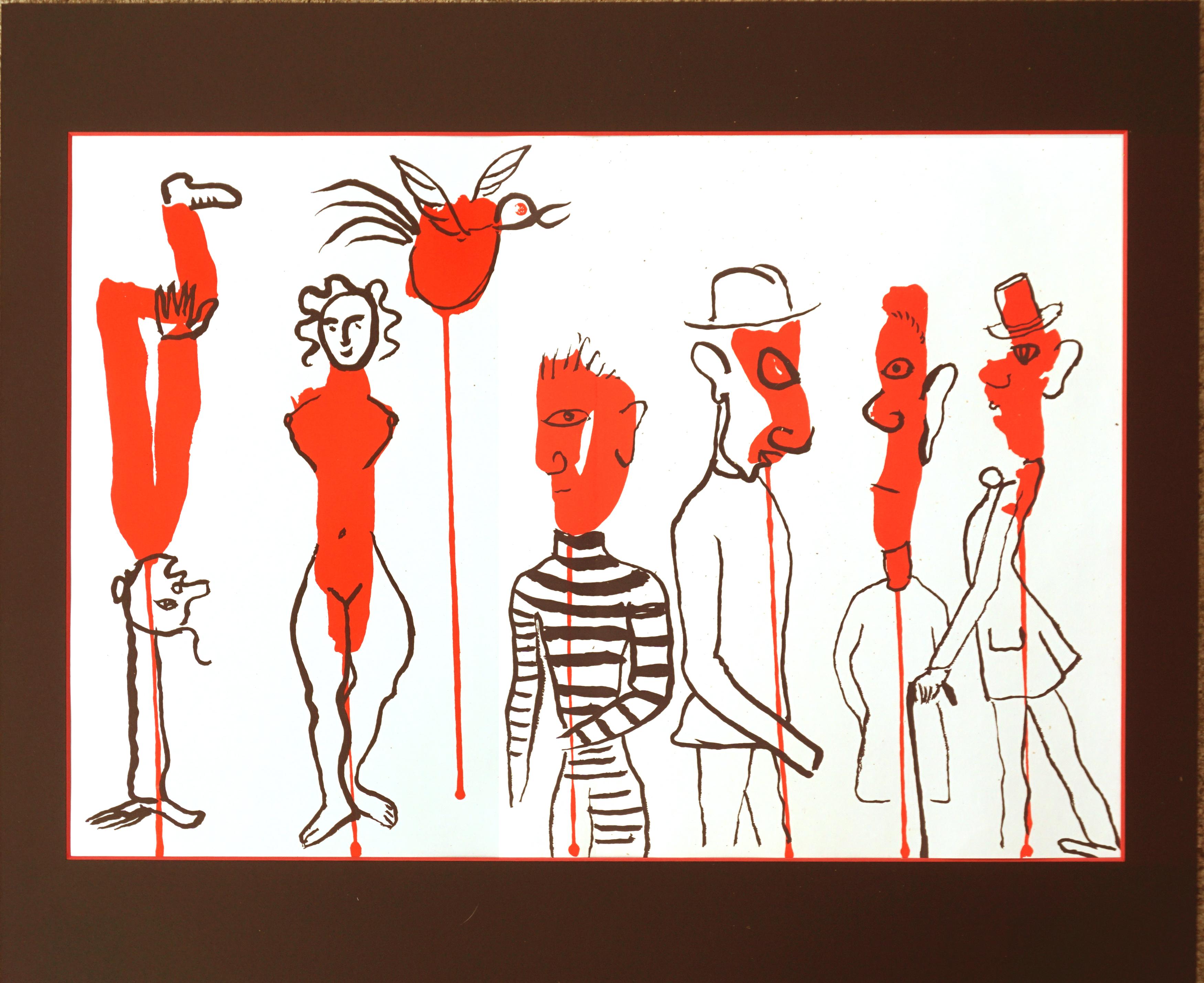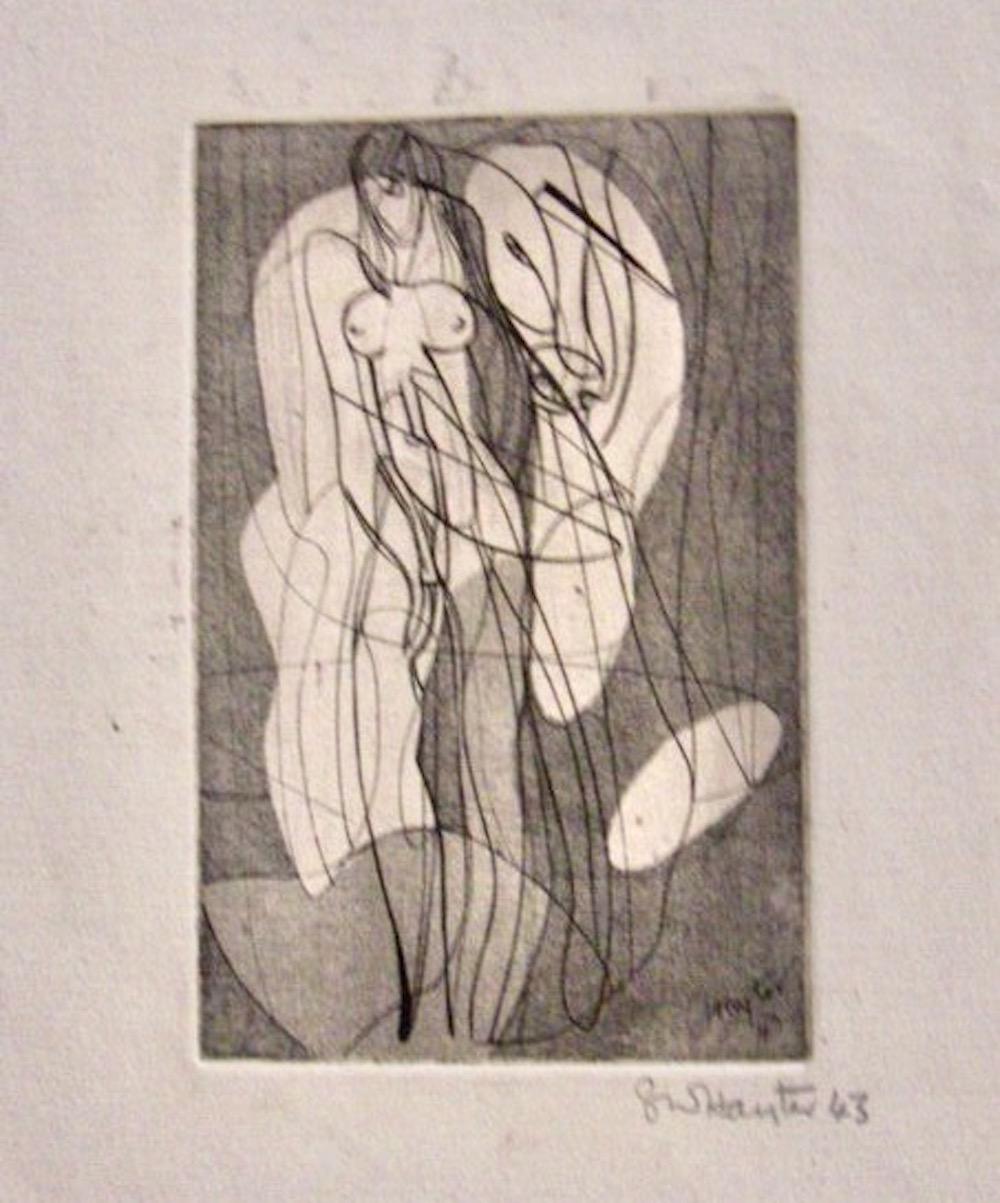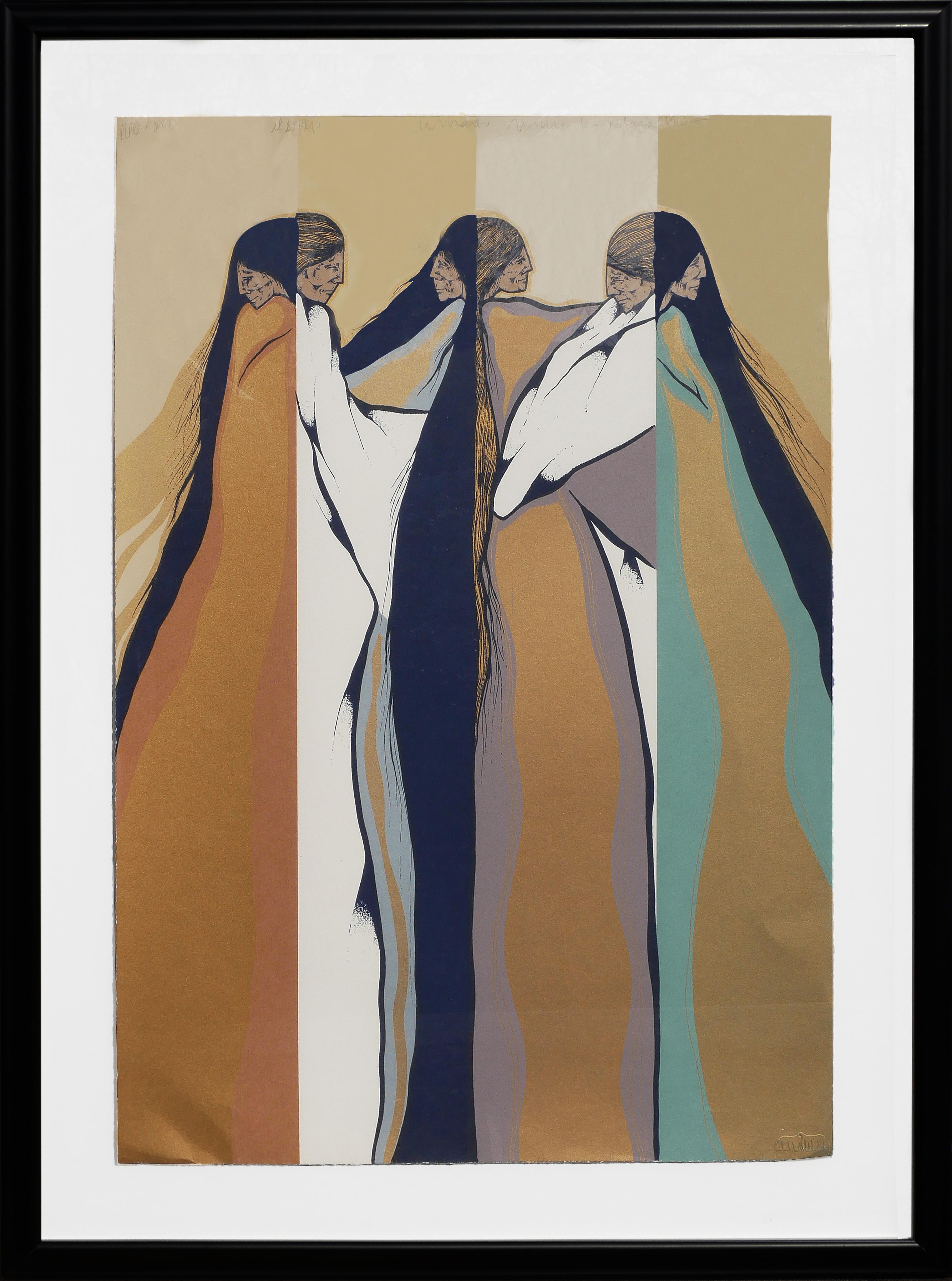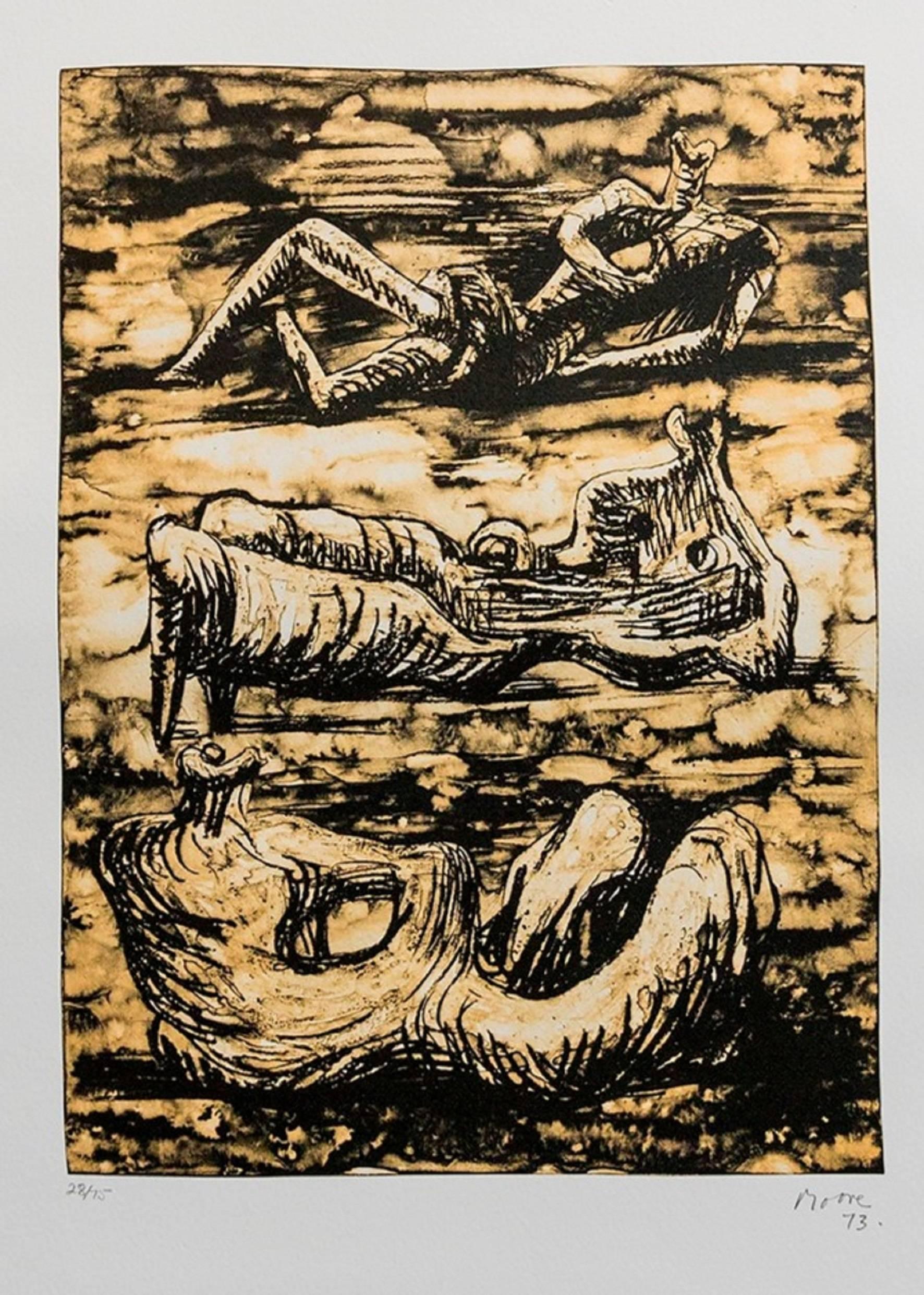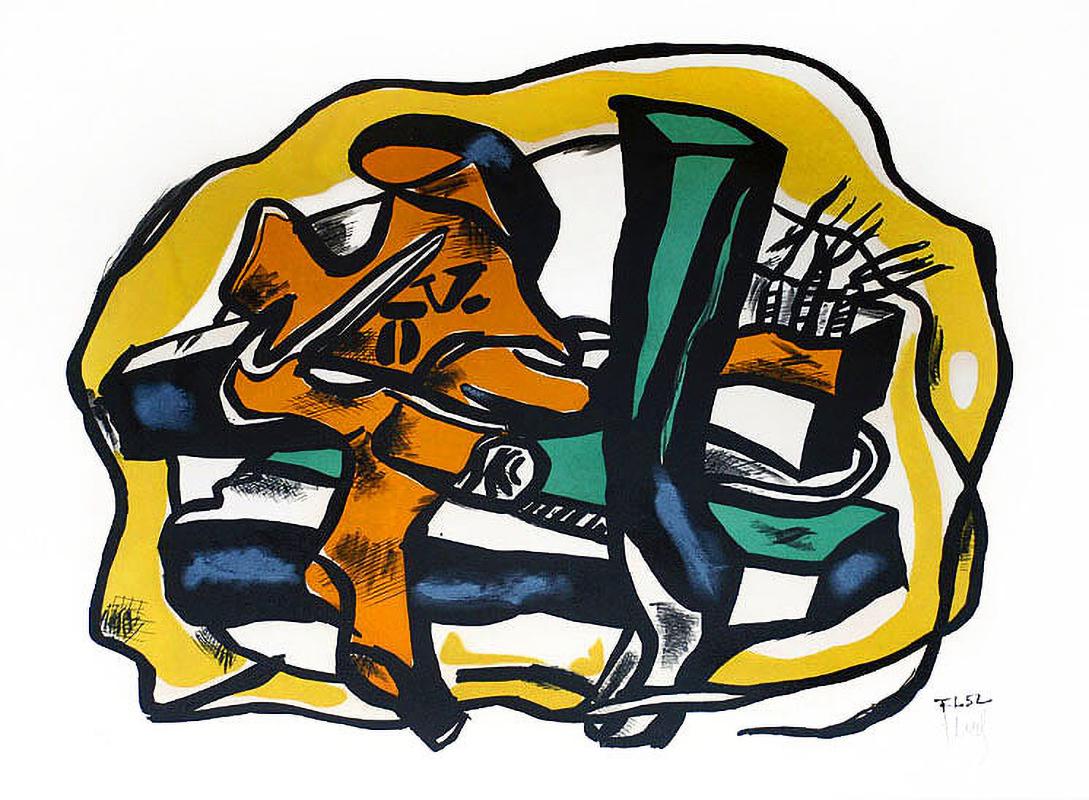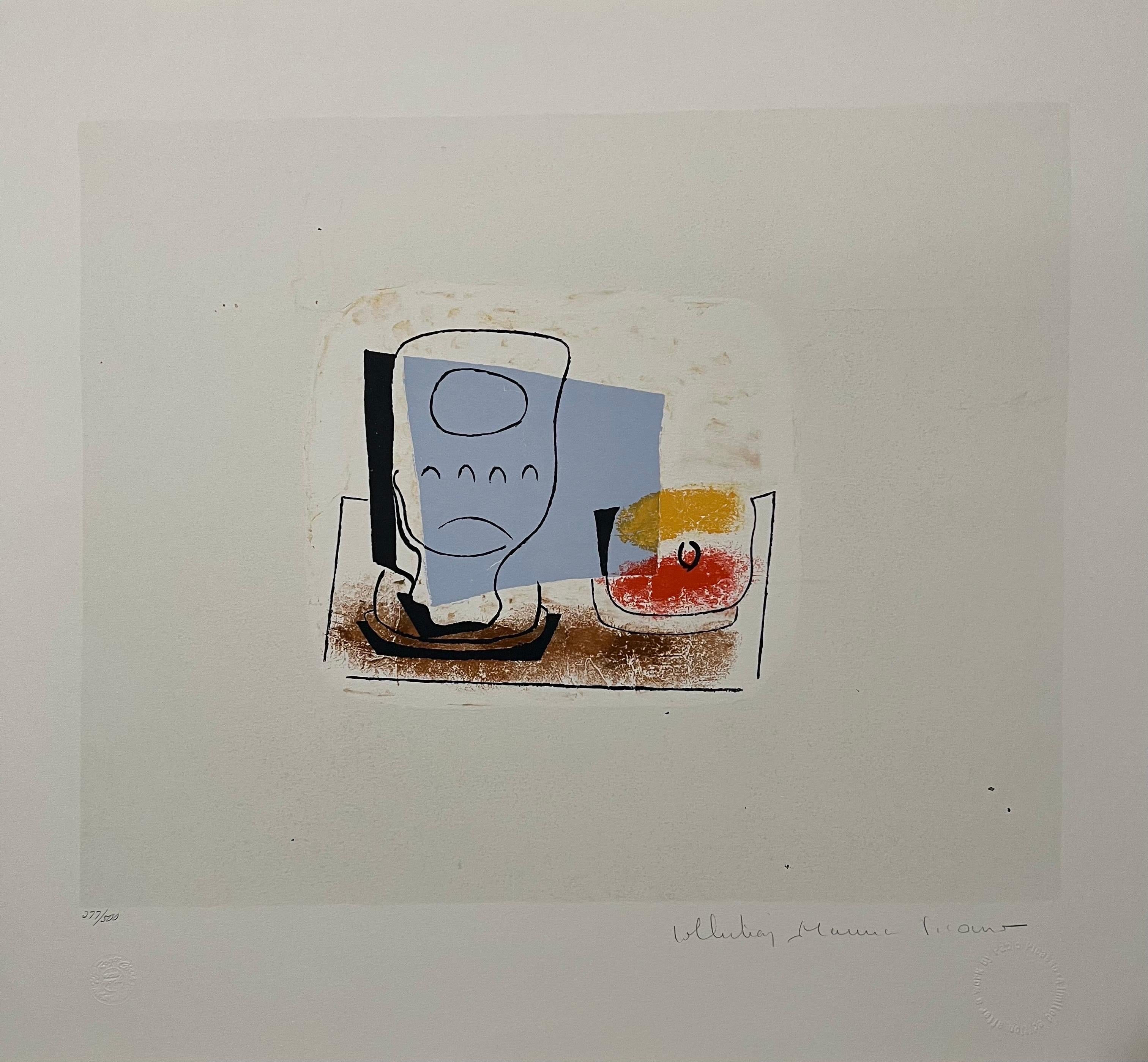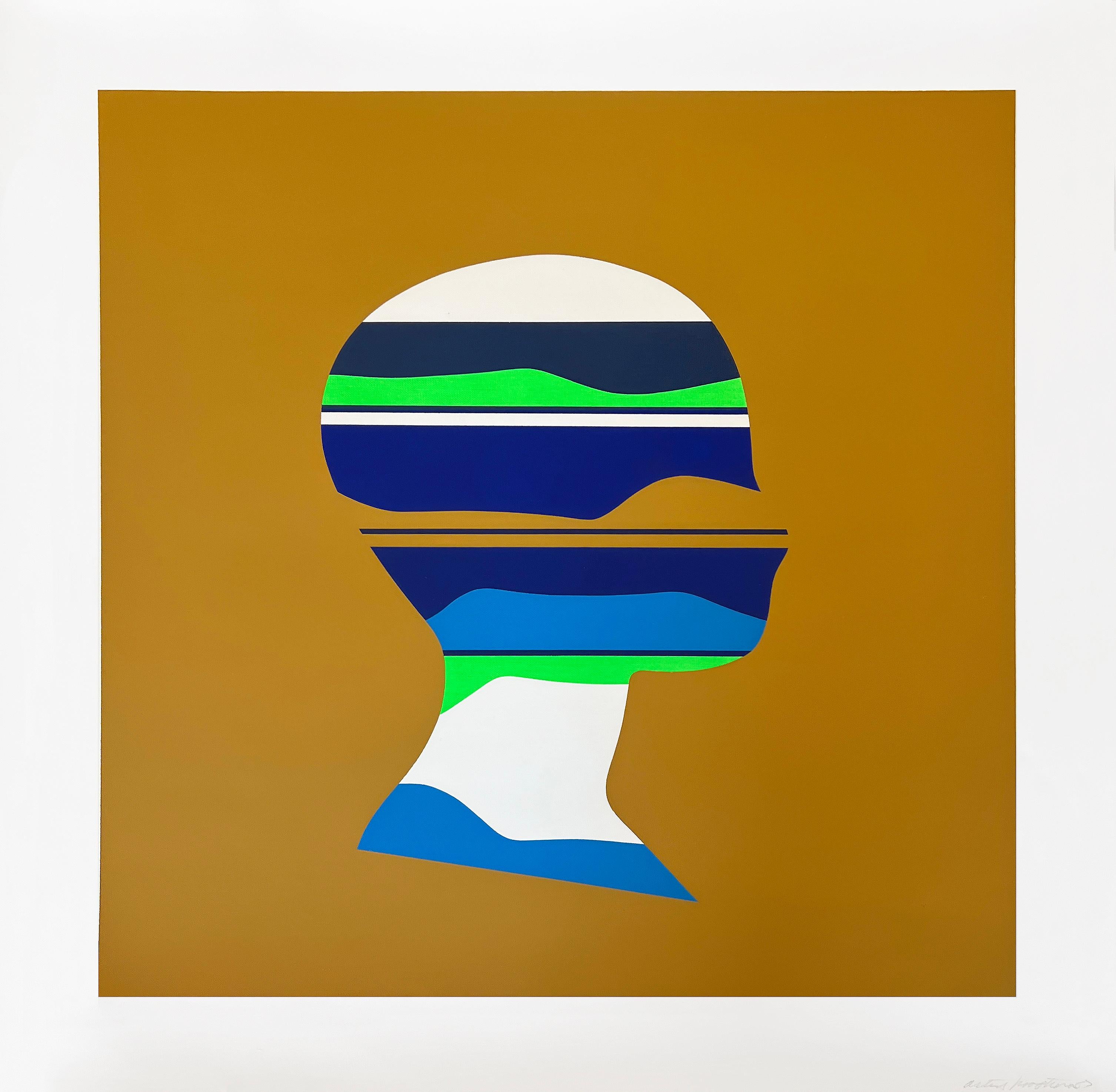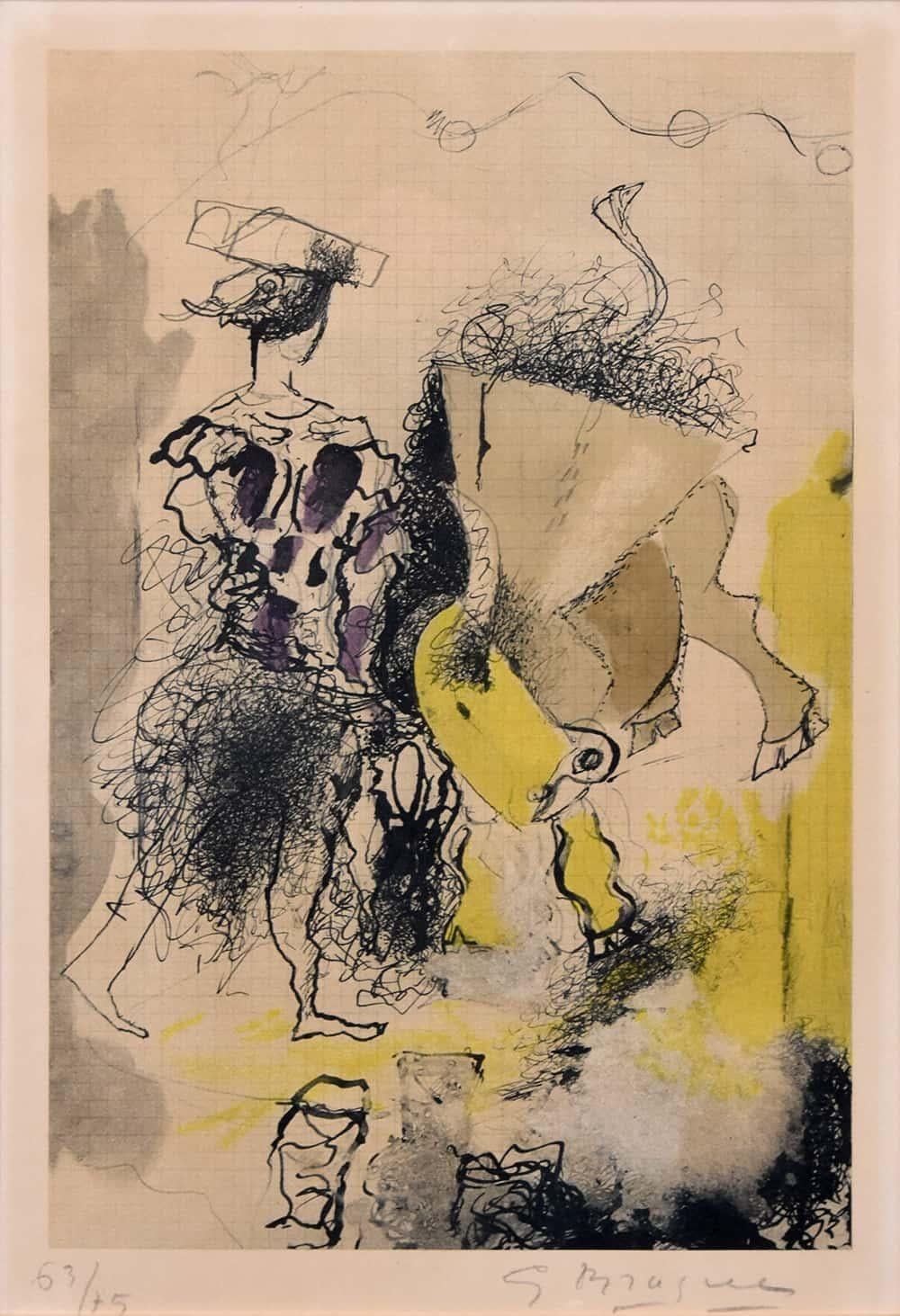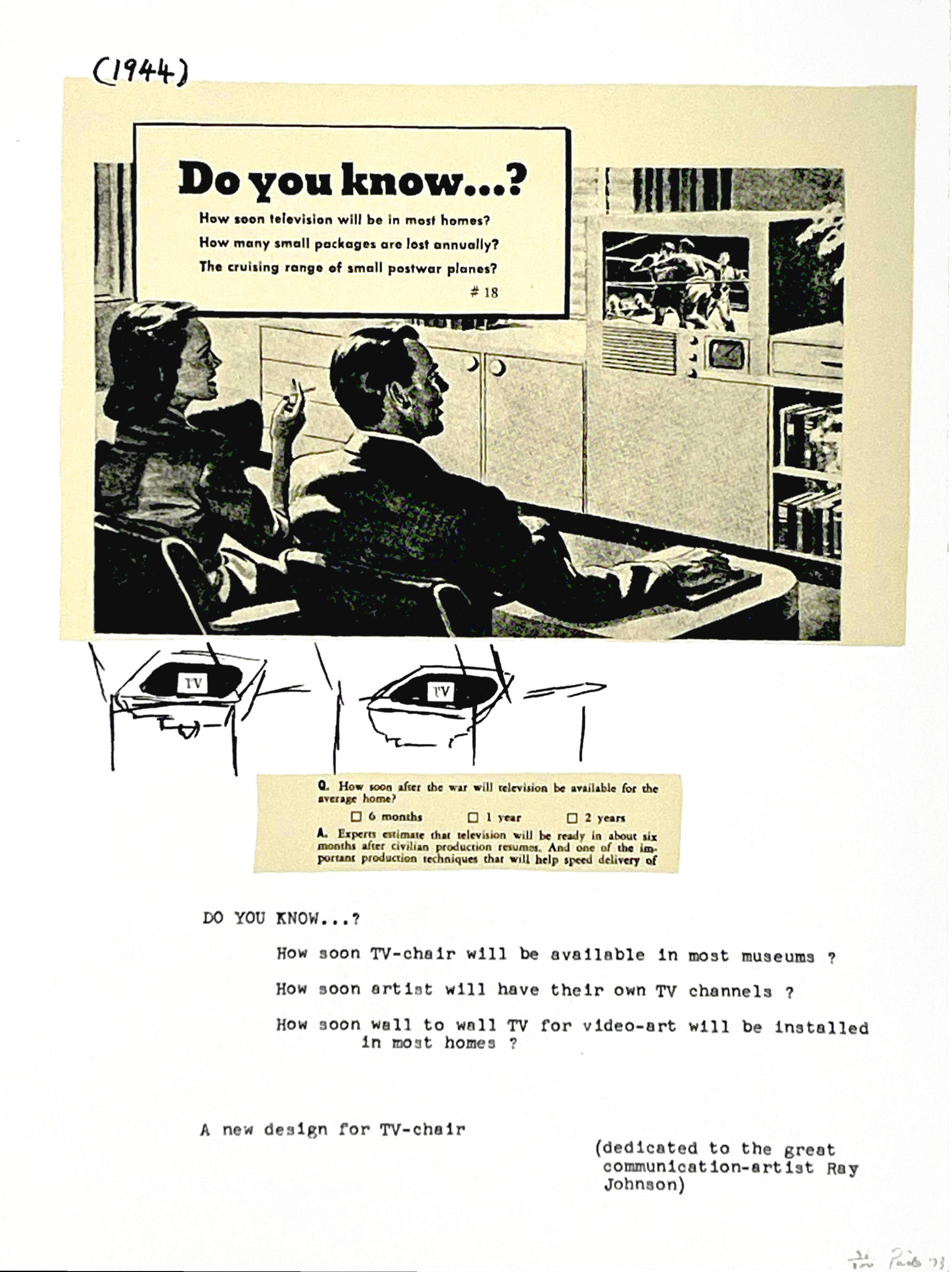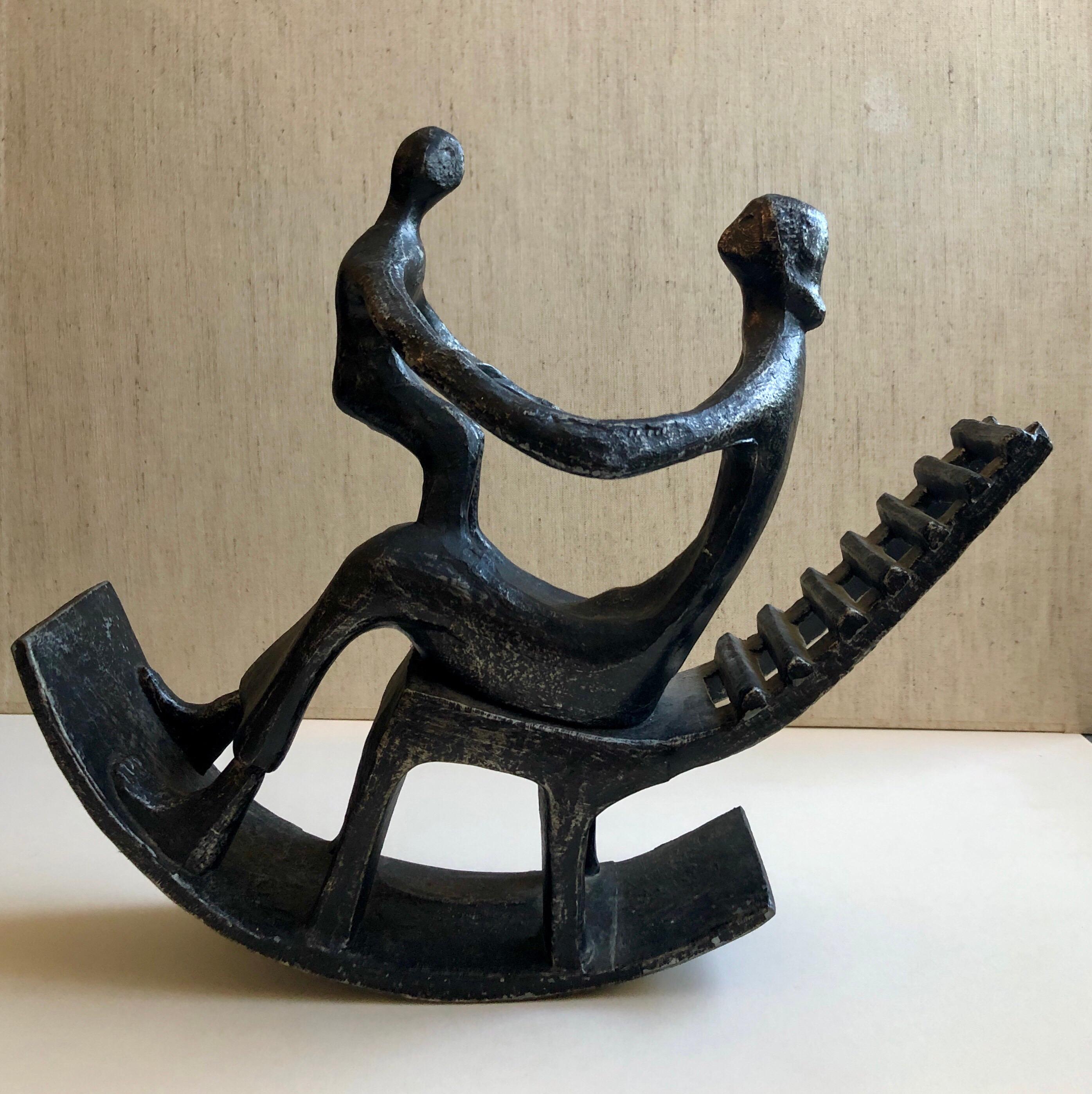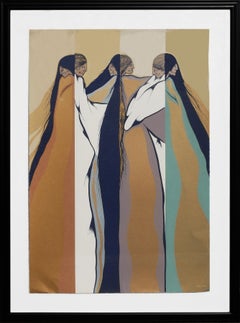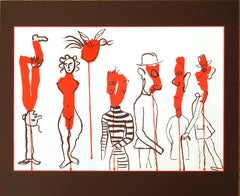Man Twirling Mustache Abstract Figurative Digital Print
View Similar Items
Want more images or videos?
Request additional images or videos from the seller
1 of 9
Friedensreich HundertwasserMan Twirling Mustache Abstract Figurative Digital Print1970's
1970's
About the Item
- Creator:Friedensreich Hundertwasser (1928-2000, Austrian)
- Creation Year:1970's
- Dimensions:Height: 35.75 in (90.81 cm)Width: 13.5 in (34.29 cm)Depth: 2 in (5.08 cm)
- Movement & Style:
- Period:
- Condition:
- Gallery Location:Houston, TX
- Reference Number:Seller: A2019.1207.15541stDibs: LU55135429842

About the Seller
5.0
Gold Seller
These expertly vetted sellers are highly rated and consistently exceed customer expectations.
Established in 1969
1stDibs seller since 2014
Typical response time: 5 hours
More From This SellerView All
- "El Espejo" Teal, Brown and Blue Toned Modernist Figurative PrintLocated in Houston, TXTeal, brown and blue tone abstract figurative original print by Amado Maurilio Pena. The piece depicts five women figures that either appear back-to-back or fa...Category
1970s Modern Abstract Prints
MaterialsArchival Pigment
- "Freaks Frieze" Surrealist Figurative Artist Proof EtchingLocated in Houston, TXSurrealist figurative etching of a train of characters. The work is signed by Houston, Texas artist Jack Spivey. The work is framed in a wooden frame with ...Category
20th Century Modern Abstract Prints
MaterialsEtching
- "Upper Room" Modern Abstract Figurative Female Lithograph Edition 10/75By John BiggersLocated in Houston, TXModern abstract figurative lithograph by renowned artist John Biggers. The work features a trio of women carrying a house on their backs set against a rural landscape. Signed, titled, dated, and editioned along the front lower margin. Currently hung in a black frame with a white matting. Dimensions Without Frame: H 38.75 in. x W 27 in. Artist Biography: Born in Gastonia, North Carolina in 1924, John Biggers studied at Hampton Institute (now Hampton University) under Viktor Lowenfeld and muralist Charles White. In 1943, Biggers' mural, Dying Soldier, was included in the exhibition curated by Lowenfeld, Young Negro Art, at the Museum of Modern Art in New York. After serving in the United States Navy, Biggers transferred to Pennsylvania State University where he earned his bachelor’s and master’s degrees as well as his doctorate in art education. In 1949, Biggers accepted a faculty position at Texas State University for Negroes (now Texas Southern University) in Houston, where he founded and chaired the art department until his retirement. In the early 50s, he won prizes for his work at annual exhibitions held at the Museum of Fine Arts, Houston and the Dallas Museum of Art. In 1957, he traveled to Africa on a UNESCO fellowship to study Western African cultural traditions, becoming one of the first black artists to study the culture first-hand rather than through library research. His work was profoundly influenced by his experiences in Africa. He was known for his murals, but also for his drawings, paintings, and lithographs, and was honored by a major traveling retrospective exhibition from 1995 to 1997. He created archetypal imagery that spoke positively to the rich and varied ethnic heritage of African Americans, long before the Civil Rights era drew...Category
1980s Modern Figurative Prints
MaterialsLithograph
- "Hollywood Star" Abstract Modern Figurative Etching of Three Men on HorsebackBy Lucas JohnsonLocated in Houston, TXModern abstract black and white etching of three men in uniform on horseback. Dated and titled in lower left corner and signed in the lower right in pencil. Hung in a complimentary black matte and frame. Includes original 1970s purchase information on the back. Dimensions Without Frame: H 11 in. x W 9 in. Artist Biography: Lucas Johnson (1940-2002) was born in Hartford, Connecticut and raised in southern California. His work is included in the permanent collections of The Menil Collection...Category
1970s Modern Figurative Prints
MaterialsEtching
- Abstract Yellow, Black, and White Abstract Portrait Lithograph Edition 72/80Located in Houston, TXModern abstract portrait lithograph by Venezuelan artist Hector Poleo. The work features a figure in profile wearing a yellow hat and matching outfit. Softly rendered in his signatur...Category
Mid-20th Century Modern Figurative Prints
MaterialsLithograph
- Earth-Toned Abstract Figurative Woman with Drinking Glasses 137/140By Alvar Sunol Munoz-RamosLocated in Houston, TXModern figurative abstract of a woman with fruit and wine on a table in front of her. The work is in brown and blue tones. Signed and editioned by the...Category
20th Century Contemporary Figurative Prints
MaterialsLithograph
You May Also Like
- Alexander Calder Mid Century Derrière le Miroir LithographBy Alexander CalderLocated in Soquel, CAVintage 1960s Alexander Calder Lithograph double page part of portfolio "Derriere le Miroir". Published by: Galerie Maeght, Paris, 1966. No. 156. Text on verso. Unsigned, from an unknown edition. Presented in black mat with red core. Mat size: 20"H x 24"W. Image size: 15"H x 22"W. American artist Alexander Calder changed the course of modern art by developing an innovative method of sculpting, bending, and twisting wire to create three-dimensional “drawings in space.” Resonating with the Futurists and Constructivists, as well as the language of early nonobjective painting, Calder’s mobiles (a term coined by Marcel Duchamp in 1931 to describe his work) consist of abstract shapes made of industrial materials––often poetic and gracefully formed and at times boldly colored––that hang in an uncanny, perfect balance. His complex assemblage Cirque Calder (1926–31), which allowed for the artist’s manipulation of its various characters presented before an audience, predated Performance Art by some 40 years. Later in his career, Calder devoted himself to making outdoor monumental sculptures...Category
1960s Modern Figurative Prints
MaterialsPaper, Ink
- Alexander Calder Mid Century Derrière le Miroir LithographBy Alexander CalderLocated in Soquel, CAVintage 1960s Alexander Calder Lithograph double page part of portfolio "Derriere le Miroir". Published by: Galerie Maeght, Paris, 1966. No. 156. Text on verso. Unsigned from an unknown edition. Presented in black mat with red core. Mat size: 20"H x 24"W. Image size: 15"H x 22"W. American artist Alexander Calder changed the course of modern art by developing an innovative method of sculpting, bending, and twisting wire to create three-dimensional “drawings in space.” Resonating with the Futurists and Constructivists, as well as the language of early nonobjective painting, Calder’s mobiles (a term coined by Marcel Duchamp in 1931 to describe his work) consist of abstract shapes made of industrial materials––often poetic and gracefully formed and at times boldly colored––that hang in an uncanny, perfect balance. His complex assemblage Cirque Calder (1926–31), which allowed for the artist’s manipulation of its various characters presented before an audience, predated Performance Art by some 40 years. Later in his career, Calder devoted himself to making outdoor monumental sculptures...Category
1960s Modern Figurative Prints
MaterialsPaper, Ink
- Stanley William Hayter, Holiday CardBy Stanley William HayterLocated in New York, NYBlack & Moorhead 158. In just the middle inch or so of this image Hayter has managed to draw in a female nude and a horse, with special attention to the head. It was Hayter's custom ...Category
Mid-20th Century American Modern Abstract Prints
MaterialsIntaglio
- Future III: modernist urban architectural monoprint & collage in gray blue blackLocated in Bryn Mawr, PA"Future III" is a Bauhaus-inspired monotype and collage (work on paper) reminiscent of the aesthetic of Le Corbusier. It is part of Bouton’s "Habitat and Urban Matter" series, which is inspired by the straight lines of modernist architecture and hard-edged geometrical forms of the urban environment. Bouton, a French printmaker from Paris who has also lived in London, Myanmar, Ivory Coast, Senegal, and Turkey, creates work that responds to her experiences during her travels and the cultures she encountered. Since settling in the Philadelphia area, she has been inspired by the urbanism of the city, whether a sleek, new apartment block, an abandoned warehouse, or a half-demolished home. Her latest works are interpretations of these buildings, with both broad street views and focused details from single structures –- the pattern of the skyline, a patchwork of broken windows, an industrial color palette. She is drawn to the history of the spaces and lives lived within these buildings, as well as their intrinsic beauty of the structures, whether that beauty emerges from design or degradation, or some combination of the two. Signed and dated. Bouton is a French artist living and working in the Philadelphia area whose boundary-pushing printmaking and paper works exhibit influence from living and working in international cities across the globe. Bouton earned her BFA in Painting and Printmaking and her MFA in Arts and Textile Design from the prestigious ESSAA Duperré in Paris, France. Since leaving Paris 15 years ago, Bouton has lived and exhibited her work internationally in Paris (France), London (UK), Philadelphia (USA), Rangoon (Burma/Myanmar), Abidjan (Ivory Coast), Dakar (Senegal) and Istanbul (Turkey). She has presented solo exhibitions at the Biennale de l’Art Africain...Category
2010s Modern Figurative Prints
MaterialsInk, Archival Paper, Monoprint, Monotype
- Henry Moore 1973 Lithograph edition 28/75 Sculpture Figures Reclining NudesBy Henry MooreLocated in Surfside, FLHenry Spencer Moore (1898 – 1986) Moore was born in Castleford, the son of a coal miner. He became well-known through his carved marble and larger-scale abstract cast bronze sculptures, and was instrumental in introducing a particular form of modernism to the United Kingdom later endowing the Henry Moore Foundation, which continues to support education and promotion of the arts. After the Great War, Moore received an ex-serviceman's grant to continue his education and in 1919 he became a student at the Leeds School of Art (now Leeds College of Art), which set up a sculpture studio especially for him. At the college, he met Barbara Hepworth, a fellow student who would also become a well-known British sculptor, and began a friendship and gentle professional rivalry that lasted for many years. In Leeds, Moore also had access to the modernist works in the collection of Sir Michael Sadler, the University Vice-Chancellor, which had a pronounced effect on his development. In 1921, Moore won a scholarship to study at the Royal College of Art in London, along with Hepworth and other Yorkshire contemporaries. While in London, Moore extended his knowledge of primitive art and sculpture, studying the ethnographic collections at the Victoria and Albert Museum and the British Museum. Moore's familiarity with primitivism and the influence of sculptors such as Constantin Brâncuși, Jacob Epstein, Henri Gaudier-Brzeska and Frank Dobson led him to the method of direct carving, in which imperfections in the material and marks left by tools became part of the finished sculpture. After Moore married, the couple moved to a studio in Hampstead at 11a Parkhill Road NW3, joining a small colony of avant-garde artists who were taking root there. Shortly afterward, Hepworth and her second husband Ben Nicholson moved into a studio around the corner from Moore, while Naum Gabo, Roland Penrose, Cecil Stephenson and the art critic Herbert Read also lived in the area (Read referred to the area as "a nest of gentle artists"). This led to a rapid cross-fertilization of ideas that Read would publicise, helping to raise Moore's public profile. The area was also a stopping-off point for many refugee artists, architects and designers from continental Europe en route to America—some of whom would later commission works from Moore. In 1932, after six year's teaching at the Royal College, Moore took up a post as the Head of the Department of Sculpture at the Chelsea School of Art. Artistically, Moore, Hepworth and other members of The Seven and Five Society would develop steadily more abstract work, partly influenced by their frequent trips to Paris and their contact with leading progressive artists, notably Pablo Picasso, Georges Braque, Jean Arp and Alberto Giacometti. Moore flirted with Surrealism, joining Paul Nash's modern art movement "Unit One", in 1933. In 1934, Moore visited Spain; he visited the cave of Altamira (which he described as the "Royal Academy of Cave Painting"), Madrid, Toledo and Pamplona. Moore made his first visit to America when a retrospective exhibition of his work opened at the Museum of Modern Art in New York City.[28] Before the war, Moore had been approached by educator Henry Morris, who was trying to reform education with his concept of the Village College. Morris had engaged Walter Gropius as the architect for his second village college at Impington near Cambridge, and he wanted Moore to design a major public sculpture for the site. In the 1950s, Moore began to receive increasingly significant commissions. He exhibited Reclining Figure: Festival at the Festival of Britain in 1951, and in 1958 produced a large marble reclining figure for the UNESCO building in Paris. With many more public works of art, the scale of Moore's sculptures grew significantly and he started to employ an increasing number of assistants to work with him at Much Hadham, including Anthony Caro and Richard Wentworth. Moore produced at least three significant examples of architectural sculpture during his career. In 1928, despite his own self-described extreme reservations, he accepted his first public commission for West Wind for the London Underground Building at 55 Broadway in London, joining the company of Jacob Epstein and Eric Gill..At an introductory speech in New York City for an exhibition of one of the finest modernist sculptors, Alberto Giacometti, Sartre spoke of The beginning and the end of history...Category
1970s Modern Abstract Prints
MaterialsLithograph
- Composition sur fond jauneBy Fernand LégerLocated in Palo Alto, CAutting a new spin on one of his favorite subjects, Léger here depicts tree trunks and logs as objects in space rather than related to the ground. The gnarled branches form an abstract still-life composition, twisting and turning in unanticipated directions. The earthy browns, greens, and yellows contrast with the bold black outlines. The logs appear as though arranged on a platter, presented to the viewer for contemplation. An intriguing aspect of this piece is the tiny box...Category
1950s Modern Abstract Prints
MaterialsLithograph
$6,500 Sale Price23% Off
Recently Viewed
View AllMore Ways To Browse
Hundertwasser Posters
Italian Dried Flowers
1940s French Bed
Japanese Prints Hiroshige
Salvador Dali Original Drawing
Wrapping Paper
Women Holding Hands
Large Face Wall Sculpture
Provence Poster
Playing The Violin
Piano Man
Venice Silk
70s Lithograph
New York Gucci
Takashi Murakami Superflat
1980s Gallery Posters
Wash Hair
Claes Oldenburg Signed
